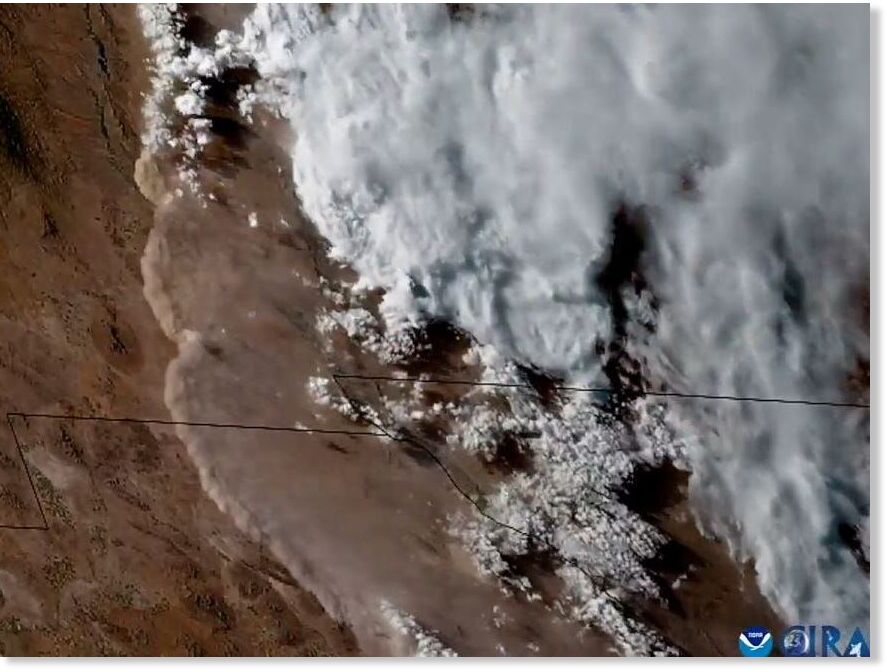
A destructive and epically proportioned dust storm, over 200-miles-long, barreled through New Mexico on Wednesday, kicking up clouds of debris visible from space.
The extreme storm, which also extended into the north of Mexico, put 18 motorists in the hospital after its rolling opaque clouds caused multiple crashes on Interstate 25.
The storm's massive wave of dust was captured in vivid color via a satellite operated jointly by the National Oceanic and Atmospheric Administration and Colorado State's Cooperative Institute for Research in the Atmosphere (CIRA).
'Less than a 1/4-mile visibility southeast of Deming,' the National Weather Service's El Paso office warned residents near the state's southern border as the storm raged on.
Gusts of high-speed wind up to 94 miles per hour tore through southern parts of the state as the Albuquerque area was left with piles of icy hail from the storm — which also caused mudslides and flooding near New Mexico's Sierra Blanca mountains.
This type of dust storm — which is caused by an air pressure shift in the aftermath of a severe thunderstorm — is technically known to meteorologists as a 'haboob,' from the Arabic word for 'blasting.'
In the run-up to a developing thunderstorm, wind flows from all directions toward the cloud formation, but the damn breaks as the storm's heavy rains begin to flow.
Soon an intense 'downburst,' a cold dense outflow of air, pushes up loose soil, sand, dust and debris as it rushes out of the thunderstorm in progress.
The resulting 'haboob' dust storm is capable of blasting these particles as high as 5,000 feet into the air.
And the ensuing wall of small particles can not only obstruct vision, but can also lead to health issues, as the particles hold a mixture of fungi, pollutants, chemicals and more.
Haboobs can occur anywhere in the United States, but tend to happen most often in the southwest.
They are also common to the Middle East and, in recent years, Australia — thanks to increasingly dry conditions on the continent induced by global climate change.
But New Mexico's haboob on Wednesday surprised scientists with its size and strength, according to the Washington Post, and civilians were left equally in awe.
One airline passenger photographed the advancing wall of dust from 30,000 feet above the state, posting to social media, 'Crazy to see a haboob from this POV.'



Reader Comments
to our Newsletter